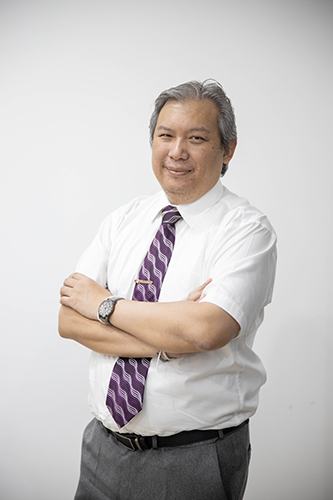Chiang Mai University’s Negative Pressure Room COVID-19 Challenge
The twenty-one days it took to build a Negative Pressure Room for COVID: ERC was one of the most challenging three weeks for Chiang Mai University’s engineering and medical experts who were racing against time, and a pandemic.
The room was built at the end of March 2020 and resulted in becoming a showcase of the ability to rapidly react to a crisis. Maharaj Nakorn hospital, the university’s hospital, was facing a surge of patients and had to separate those with the virus from the general population, hence the construction of the room.
The working group which comprised the management of the university’s Faculty of Medicine, emergency doctors, researchers and lecturers from the Faculty of Engineering and volunteer engineers worked together to create an emergency room separate from the main emergency room, with its own negative pressure. A job which under normal situations would take three to four months to complete was done so in a matter of weeks.
This tailor made negative pressure emergency room first required a budget, then a design, then engineering, all of which had to be approved by the team of medical doctors who would be using it.

Assistant Professor Nat Vorayos, Ph.D. Dean of the Faculty of Engineering (2012-2020)
“I don’t want to call this an obstacle, it was more of a challenge to overcome,” explained (Assistant Professor Nat Vorayos, Ph.D., Dean of the Faculty of Engineering.)
“Our volunteer engineers comprised of civil engineers as well as specialist air-conditioning engineers, who had to work together, all on a voluntary basis, even at a time when they had to earn a living. There was zero compensation for their time and expertise. Unlike other jobs where engineers deliver products to hospitals, this was a tailor made project with very specific requirements.”
The negative pressure room was designed to contain any possible contagion with its own separate air filtering system. HEPA Filter + UVC kills any virus and releases the ozone out clean and safe. There are four separate treatment rooms, each with its own negative pressure system, so that no air can possibly contaminate from space to space. This is crucial not just for the patient and the general public, but also for the high risk medical personnel. The short timeline, the medical requirement, the engineering expertise, all had to come together in a seamless and efficient manner.
“The common denominator for all requirements was safety,” explained Assist. Prof. Nat. “It is the one language everyone had in common and the exchange of what the word safety meant to each was crucial, as requirements and priorities differed. Once the roles were clearly allocated the next challenge was to iron out any misunderstandings or difference in opinions. It was important that everyone was on the same page. The one thing that was slipping away was time, and everyone was very aware of that pressure.”
“The design stage was the next challenge,” he continued. “We had to take the materials to cut, drill and assemble. This caused noise pollution as well as dust pollution, added extra personnel who were coming and going in what was to be a clean space and it was difficult to coordinate between pre-fabricated materials and those which needed to be built or assembled on site. Time made it essential to manage the assembling, as pieces came from many different places and there was a very tight and exacting timetable. Because this was so urgent, we managed to complete our initial design within one week. This design was then taken to a foundation, via the faculty of medicine, for approval.”
With a budget of 5,500,000, this negative pressure room is one of a kind; bespoke. There is nothing like it out in the market and it was the spirit of volunteers, the generosity of the Suan Dok Hospital Foundation as well as the alumni of the faculty of engineering which made it happen.
“When you talk about our alumni, the words ‘volunteer engineers’ are etched in our hearts,” said Assist. Prof. Nat. “We all feel very connected to, as well as responsible for, the university and it is this connection which drew so many of our alumni to dedicate time, expertise, labour and finances towards this project. We are proud to have been able to work alongside, and learn from, our colleagues from the faculty of medicine.”
“This was a unique and special project, not because we invented this room, but because we came together with the spirit of helping one another, with the pressure of time, to achieve a one of a kind product for society. The value of this this project will continue in numerous arenas, as this effort and its success is the recipe for other sustainable initiatives from educational, health, environmental, labour or even financial. We can solve the pollution crisis even governance, if everyone sets their egos and greed aside and work together for the greater good. We have proven that we can do it and this is a strength of our spirit.”
The negative pressure room is still in use at Maharaj Nakorn Hospital, Chiang Mai, Thailand.